Discover 20 hidden attractions, cool sights, and unusual things to do in Leiden (Netherlands). Don't miss out on these must-see attractions: National Museum of Ethnology, Museum Boerhaave, and Museum De Valk. Also, be sure to include Museum Het Leids Wevershuis in your itinerary.
Below, you can find the list of the most amazing places you should visit in Leiden (Zuid-Holland).
Table of Contents
National Museum of Ethnology

Also known as: Museum Volkenkunde
Long-established museum of world culture. The National Museum of Ethnology, is an ethnographic museum in the Netherlands located in the university city of Leiden. As of 2014, the museum, along with the Tropenmuseum in Amsterdam, and the Africa Museum in Berg en Dal, together make up the National Museum of World Cultures.[1]
Address: Steenstraat 1, 2312 BS Leiden
Museum Boerhaave
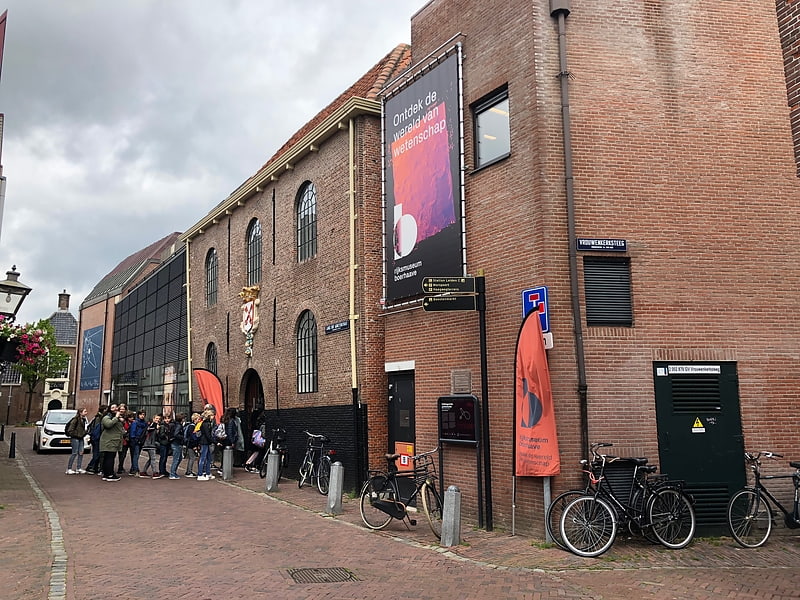
Also known as: Rijksmuseum Boerhaave
History of Dutch sciences and medicine. Rijksmuseum Boerhaave is a museum of the history of science and medicine, based in Leiden, Netherlands. The museum hosts a collection of historical scientific instruments from all disciplines, but mainly from medicine, physics, and astronomy.
The museum is located in a building that was originally a convent in central Leiden. It includes a reconstructed traditional anatomical theatre. It also has many galleries that include the apparatus with which Heike Kamerlingh Onnes first liquefied helium (in Leiden), the electromagnet equipment used by Wander Johannes de Haas (a Leiden physicist) for his low-temperature research, and an example of the Leiden jar, among many other objects in the extensive collection.
The museum is named after Herman Boerhaave, a Dutch physician and botanist who was famous in Europe for his teaching at Leiden and lived to a great age, receiving brilliant students from all over Europe, including Peter the Great, Voltaire and Linnaeus.[2]
Address: Lange Sint Agnietenstraat 10, 2312 WC Leiden
Museum De Valk
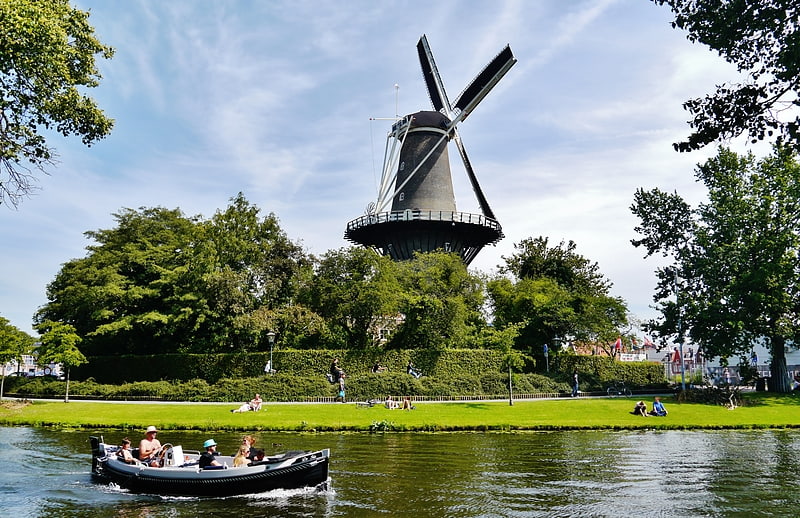
Also known as: De Valk
De Valk is a tower mill and museum in Leiden, Netherlands.
The current tower mill is the third mill built at this location. In 1611 the post mill "De Valck" was built, and in 1667 it was replaced by a wooden post mill. In 1743 a higher tower mill was built. De Valk originally was equipped with six mill stones. There were two dwellings in the mill, originally for the two owners, later for the miller and his assistant.
In June 1966 the mill became a municipal museum. In 2000, the De Valk mill became operationally functional again and has been used for milling.[3]
Address: Tweede Binnenvestgracht 1, 2312 BZ Leiden
Museum Het Leids Wevershuis
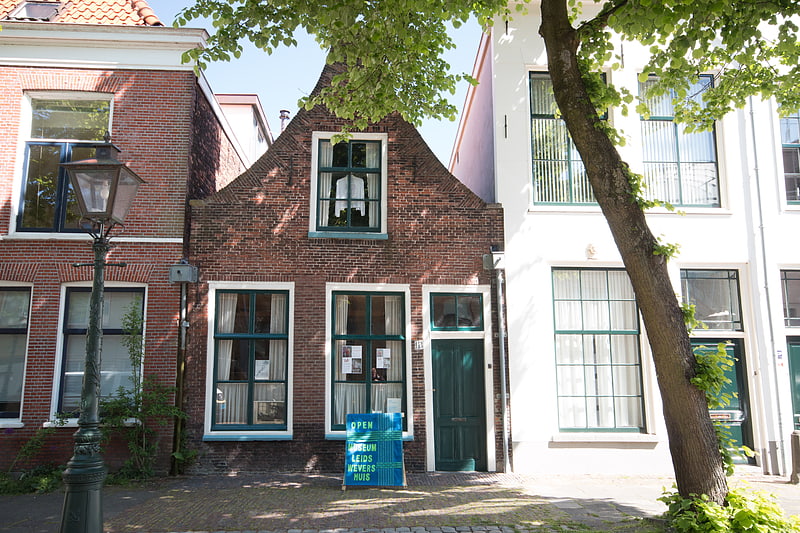
Museum in Leiden, Netherlands. Museum Het Leids Wevershuis consists of one of the last remaining "weavers' homes" in Leiden, Netherlands. The exterior, the large antique loom and the interior, are testimony of the once flourishing textile industry around Leiden, in particular during the 16th and 17th century, when many home weavers supplied the draper's guild with high quality woolen cloth.[4]
Address: Middelstegracht 143, 2312 TV Leiden
De Burcht
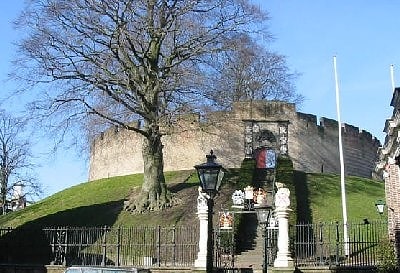
Also known as: Burcht van Leiden
Historical landmark in Leiden, Netherlands. The Burcht van Leiden is an old shell keep in Leiden constructed in the 11th century. It is located at the spot where two tributaries of the Rhine come together, the Oude Rijn and the Nieuwe Rijn. The structure is on top of a motte, and is today a public park.[5]
Address: Burgsteeg 14, 2312 JS Leiden
Rijksmuseum van Oudheden
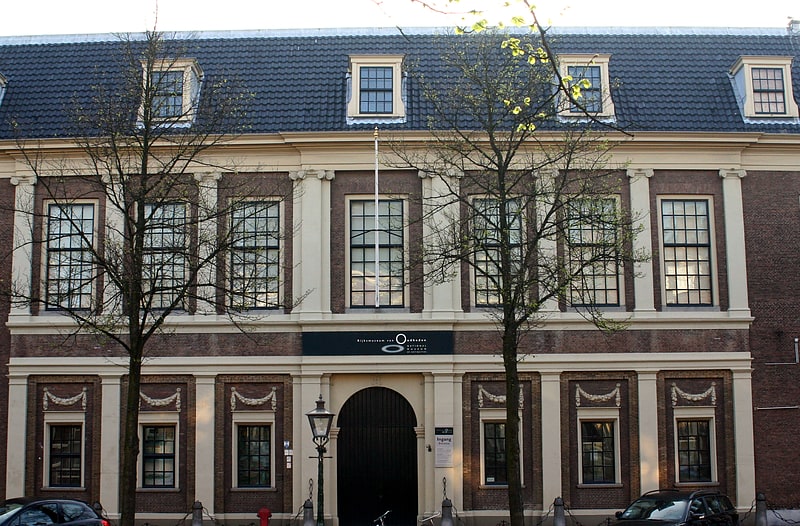
Egyptian, Greek and Roman antiquities. The Rijksmuseum van Oudheden is the national archaeological museum of the Netherlands, located in Leiden. It grew out of the collection of Leiden University and still closely co-operates with its Faculty of Archaeology. The museum calls itself "the national centre for archaeology" and focuses on ancient Egypt, the ancient Near East, the classical world of Greece, Etruria and Rome and the early Netherlands.[6]
Address: Rapenburg 28, 2311 EW Leiden
Leiden American Pilgrim Museum
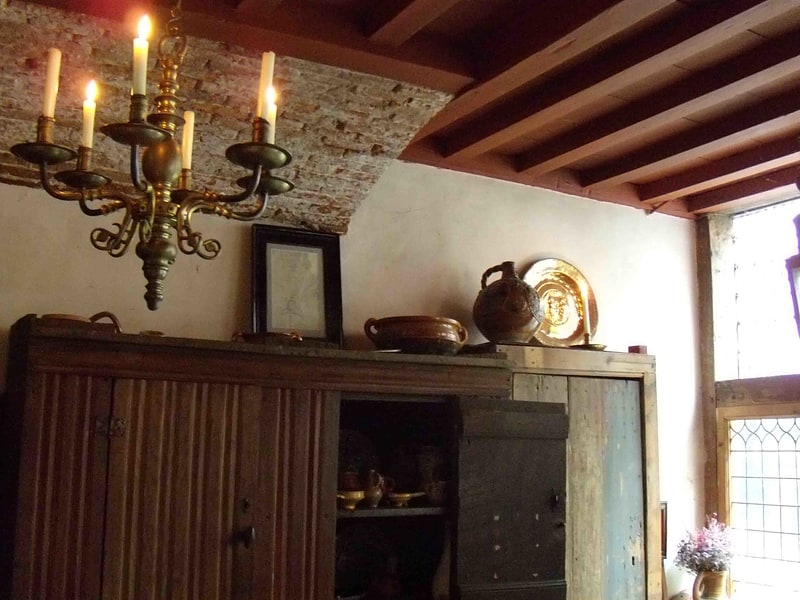
Museum of founders of New England. The Leiden American Pilgrim Museum is a small museum in the Dutch city of Leiden dedicated to the Pilgrim Fathers. These Separatists or English Dissenters were religious refugees who had fled England to Amsterdam in 1608 and moved to Leiden the next year. They lived and worked in that city for about 12 to 20 years. In 1620, their emigration began. They left Leiden by canal, going to Delfshaven where they embarked on the Speedwell, which took them to Southampton. But the Speedwell proved leaky and had to be sold, so they transferred to the Mayflower. The Mayflower undertook the famous voyage to New England in 1620 alone. In the 19th century the colonists' first harvest festival after their arrival at Plymouth Colony was identified as the origin of the annual Thanksgiving celebration in the United States.[7]
Address: Beschuitsteeg 9, 2312 JT Leiden
Museum De Lakenhal
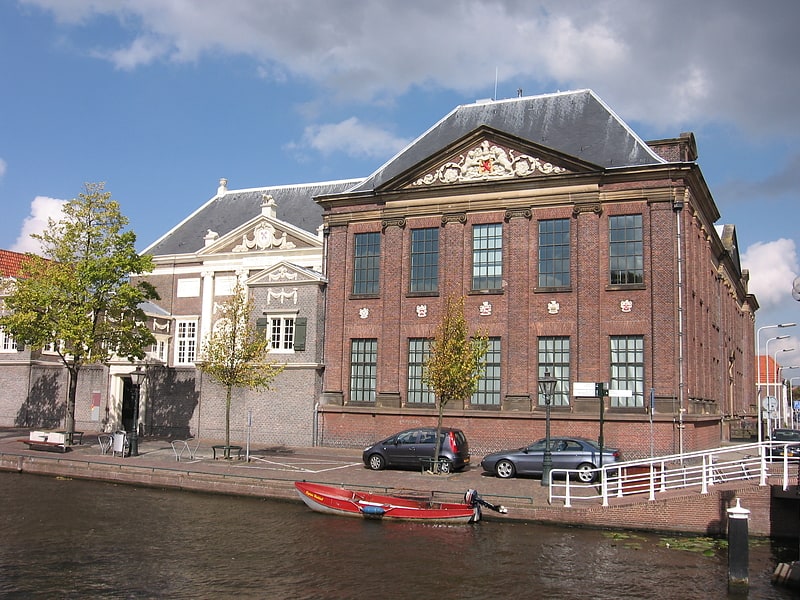
Fine art museum with works by Rembrandt. Museum De Lakenhal is the city museum of fine art and history in Leiden, Netherlands. One highlight is its collection of fijnschilder paintings from the Dutch Golden Age. Just like the city, the museum combines a classical appearance with a contemporary character. The broad collection ranges from early works by Rembrandt van Rijn and Lucas van Leyden's Last Judgement to modern classics of De Stijl and artworks created by contemporary artists such as Claudy Jongstra, Atelier van Lieshout and many others.[8]
Address: Oude Singel 32, 2312 RA Leiden
Hooglandse Kerk
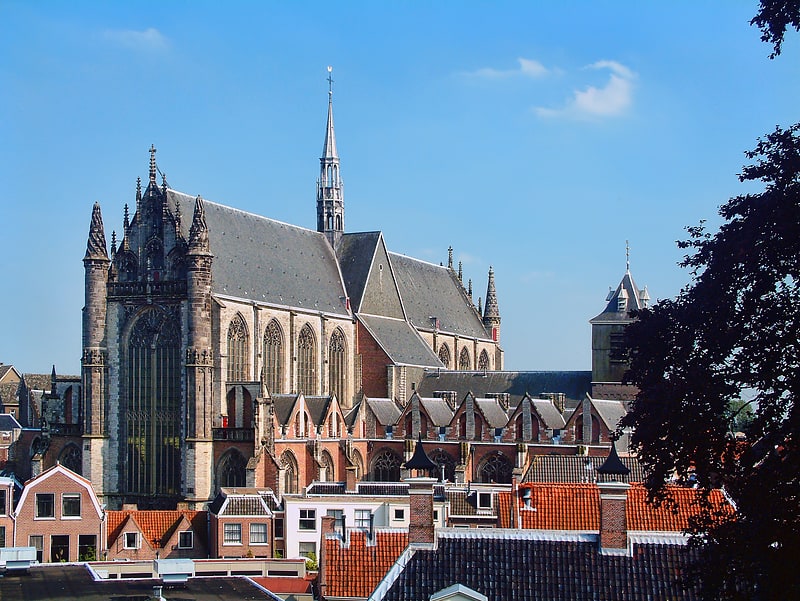
Church in Leiden, Netherlands. The Hooglandse Kerk is a Gothic church in Leiden. Its earliest parts date back to the last quarter of the fourteenth century. Most of the current structure dates from the fifteenth century. The brick church was dedicated to St. Pancras and today serves parishioners of the Protestant Church in the Netherlands.[9]
Address: Nieuwstraat 20, 2312 KC Leiden
SieboldHuis
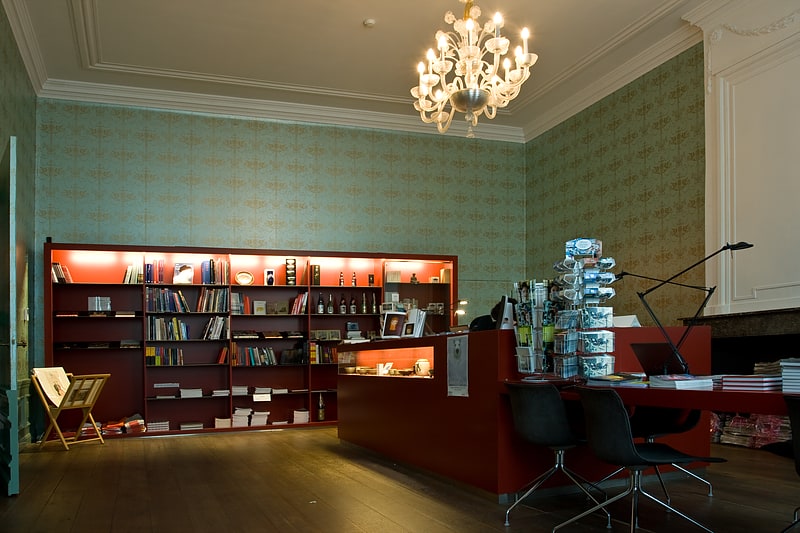
Museum in Leiden, Netherlands. Japan Museum SieboldHuis is a museum located at the Rapenburg in Leiden, Netherlands. It displays items that were collected by Philipp Franz von Siebold between 1823 and 1829 during his stay at Dejima, the Dutch trade colony nearby Nagasaki in Japan. It also functions as a museum of Japanese culture.
Siebold was highly interested in all aspects of Japanese nature and culture, and as such his collection is very diverse. Japan Museum SieboldHuis has a permanent exhibition of maps, rocks, animals, plants, utensils and art. Temporary exhibitions offer a varied selection of Japanese art.
The monumental house is property of the Dutch government (Government Buildings Agency) and used to house the cantonal court.[10]
Address: Rapenburg 19, 2311 GE Leiden
Heilige Lodewijkkerk
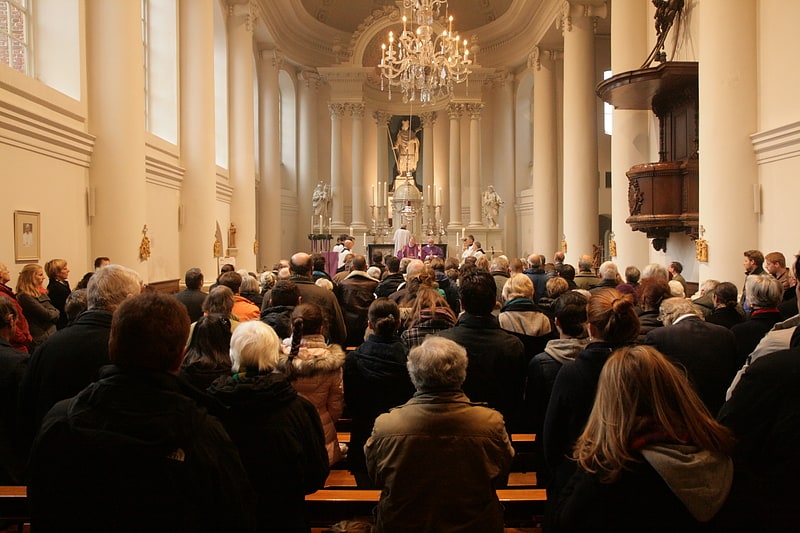
Catholic church in Leiden, Netherlands. The Heilige Lodewijkkerk, also called the St. Louis Church, is a Roman Catholic church at the Steenschuur in Leiden.[11]
Address: Steenschuur 19, 2311 ES Leiden
Pieterskerk

Events center in a former church. The Pieterskerk is a late-Gothic Dutch Protestant church in Leiden dedicated to Saint Peter. It is known today as the church of the Pilgrim Fathers, where the pastor John Robinson was buried. It is also the burial place of the scientist Willebrord Snellius.[12]
Address: Pieterskerkhof 1A, 2311 SP Leiden
Leiden Observatory
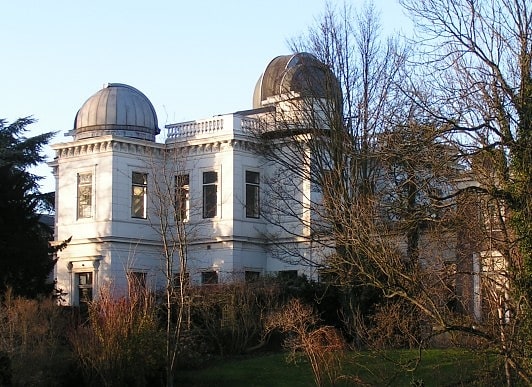
Also known as: Sterrewacht Leiden
University astronomical observatory. Leiden Observatory is an astronomical institute of Leiden University, in the Netherlands. Established in 1633 to house the quadrant of Rudolph Snellius, it is the oldest operating university observatory in the world, with the only older still existing observatory being the Vatican Observatory.
The observatory was initially located on the university building in the centre of Leiden before a new observatory building and dome were constructed in the university's botanical garden in 1860. It remained there until 1974 when the department moved to the science campus north-west of the city. Notable astronomers that have worked or directed the observatory include Willem de Sitter, Ejnar Hertzsprung and Jan Oort.[13]
Address: Sterrenwachtlaan 11, 2311 GW Leiden
Hortus Botanicus
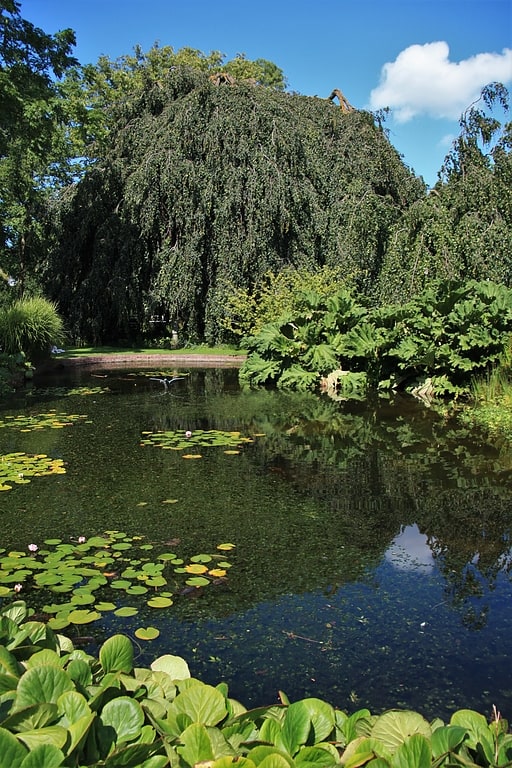
Also known as: Hortus botanicus Leiden
Established botanical gardens with cafe. The Hortus botanicus of Leiden is the oldest botanical garden of the Netherlands, and one of the oldest in the world. It is located in the southwestern part of the historical centre of the city, between the Academy building and the old Leiden Observatory building.[14]
Address: Rapenburg 73, 2311 GJ Leiden
Matilo
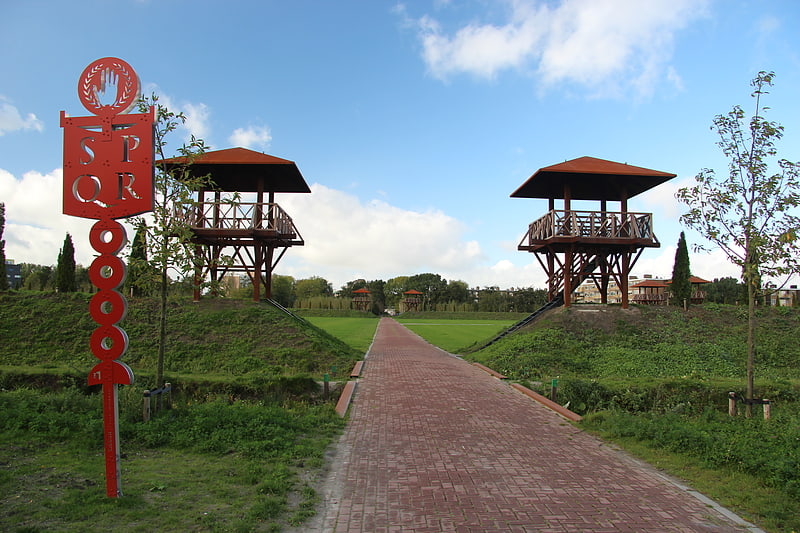
Matilo or Matilone was once a Roman fort in modern-day Leiden. Positioned on the southern banks of the Oude Rijn, it served to protect the Roman borders in the province of Germania inferior. On the Peutinger map, it lies between the encampments of Albaniana and Praetorium Agrippinae. The seventh-century Ravenna Cosmography gives its name as Matellionem.[15]
Vrouwekerk

The Vrouwekerk or Vrouwenkerk, originally known as the Onze-Lieve-Vrouwekerk, was a 14th-Century church in the Dutch city of Leiden. In the early 17th Century, the church was attended by the Pilgrims as well as by the first colonists to settle on Manhattan.
The ruined remains of this Gothic church are located on the Vrouwenkerkhof square opposite Museum Boerhaave, just north of the busy shopping street Haarlemmerstraat. The alley Vrouwenkerksteeg, which runs from the Haarlemmerstraat to the Vrouwenkerkhof, is also named after the Vrouwekerk church. The church remains have rijksmonument (national monument) status. In 2008-2009 the church underwent restoration.
Carolus Clusius and Joseph Justus Scaliger were buried in the Vrouwekerk.[16]
Address: Vrouwenkerkhof 5, Leiden
Corpus Museum
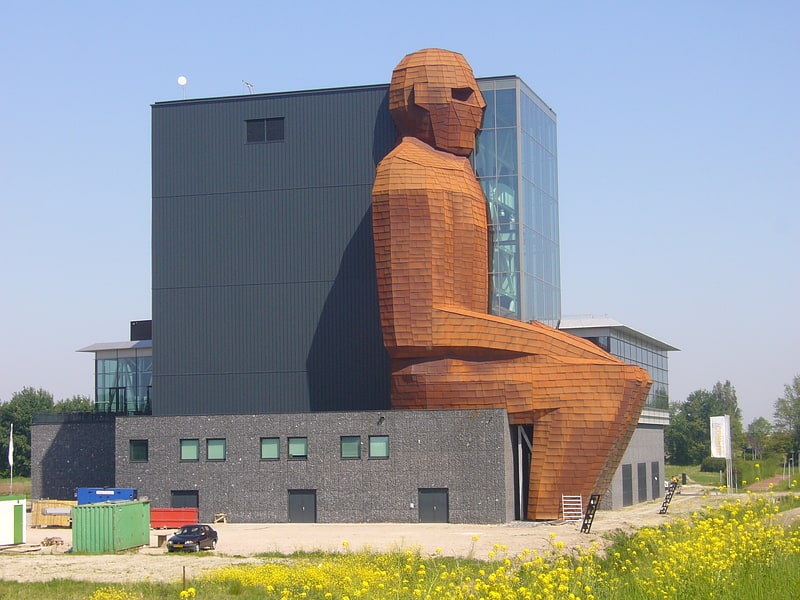
Also known as: CORPUS
Walk-through tour of the human body. The Corpus Museum is a human biology interactive museum, located near Oegstgeest in the Netherlands.
Billed as "a journey through the human body", the museum provides both education and entertainment through a combination of permanent and variable collections.
Opened in 2008 by Queen Beatrix, the museum is the world's first museum of its type.[17]
Address: Willem Einthovenstraat 11, 2342 BG Oegstgeest
Nationaal Museum van Wereldculturen
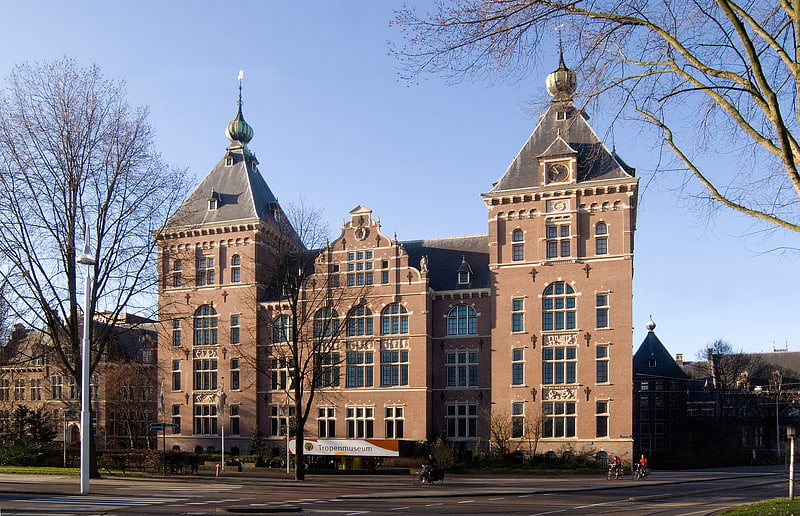
Museum. The Dutch: Nationaal Museum van Wereldculturen is an overarching museum organisation for the management of several ethnographic museums in the Netherlands, founded in 2014. It consists of the Tropenmuseum in Amsterdam, the Afrika Museum in Berg en Dal, and the Museum Volkenkunde in Leiden. The National Museum of World Cultures works in close cooperation with the Wereldmuseum in Rotterdam. It is also part of nation-wide Dutch organisations for research into provenance studies and projects of restitution of cultural heritage to countries of origin, like the former Dutch colony in today's Indonesia.[18]
Gemeenlandshuis van Rijnland
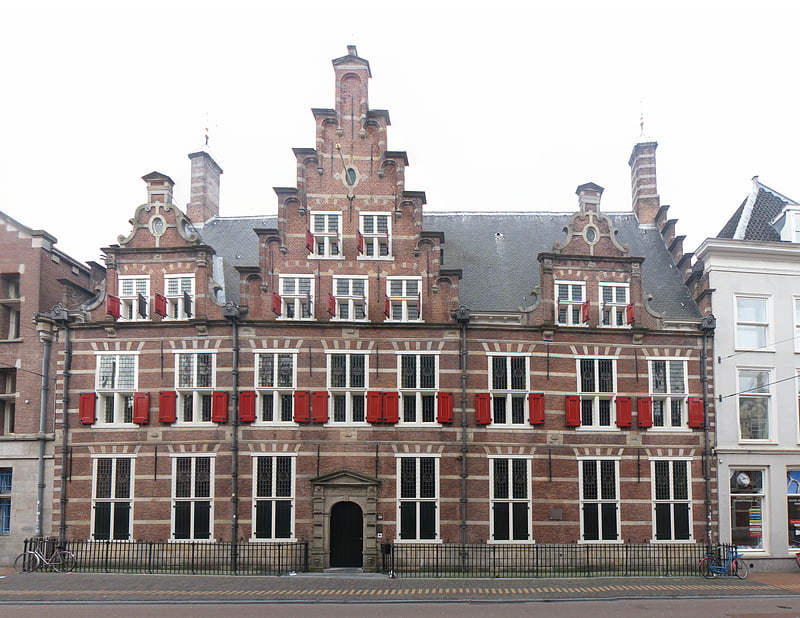
The Gemeenlandshuis van Rijnland on the Breestraat in Leiden is the oldest Gemeenlandshuis of the Netherlands that kept its function until the current century. Currently, it is still in use by the Hoogheemraadschap van Rijnland, but only for meetings and special occasions. Their day-to-day seat of water management is housed today on the Archimedesweg in Leiden.[19]
Address: Breestraat 59, Leiden
Zijlpoort
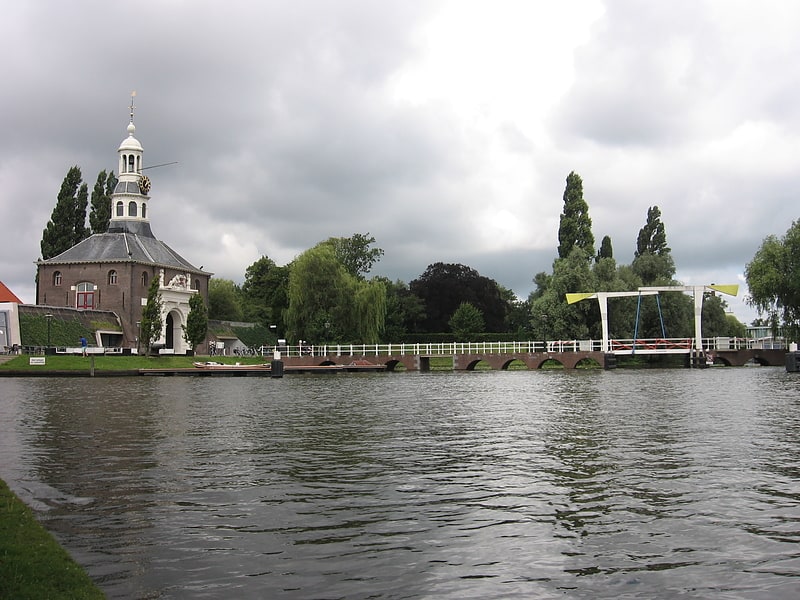
Zijlpoort is a city gate in Leiden, The Netherlands. The gate was built in 1667 in the classical style according to a design by the Leiden architect Willem van der Helm and with sculpture by Rombout Verhulst. Because the gates have to connect with the city wall as well as with a bridge, the building is in the form of a parallelogram. The Zijlpoort, together with the Morspoort and Doelenpoort, are the only of the original eight gates that survived. The name refers to the nearby river, the Zijl. The predecessor of the Zijlpoort stood at the end of the Haarlemmerstraat that is now called the Havenplein.
In the course of time, the Zijlpoort has, together with the hall above the passage, fulfilled different purposes over time: for example, at the beginning of the 18th century, a society of amateur poets and playwrights (a so-called guild of "rederijkers") was based there, and from 1736 there was a school for poor children. Afterwards in the late 19th century, the city had a storage room above the gate.
In the last quarter of the 20th century, the Zijlpoort was renovated twice on a large scale. During the last renovation, in the 1990s, supporting constructions were put up on both sides of the gate. Since 1999, a catering shop has been established in one of them.[20]
Address: Haven 64, Leiden